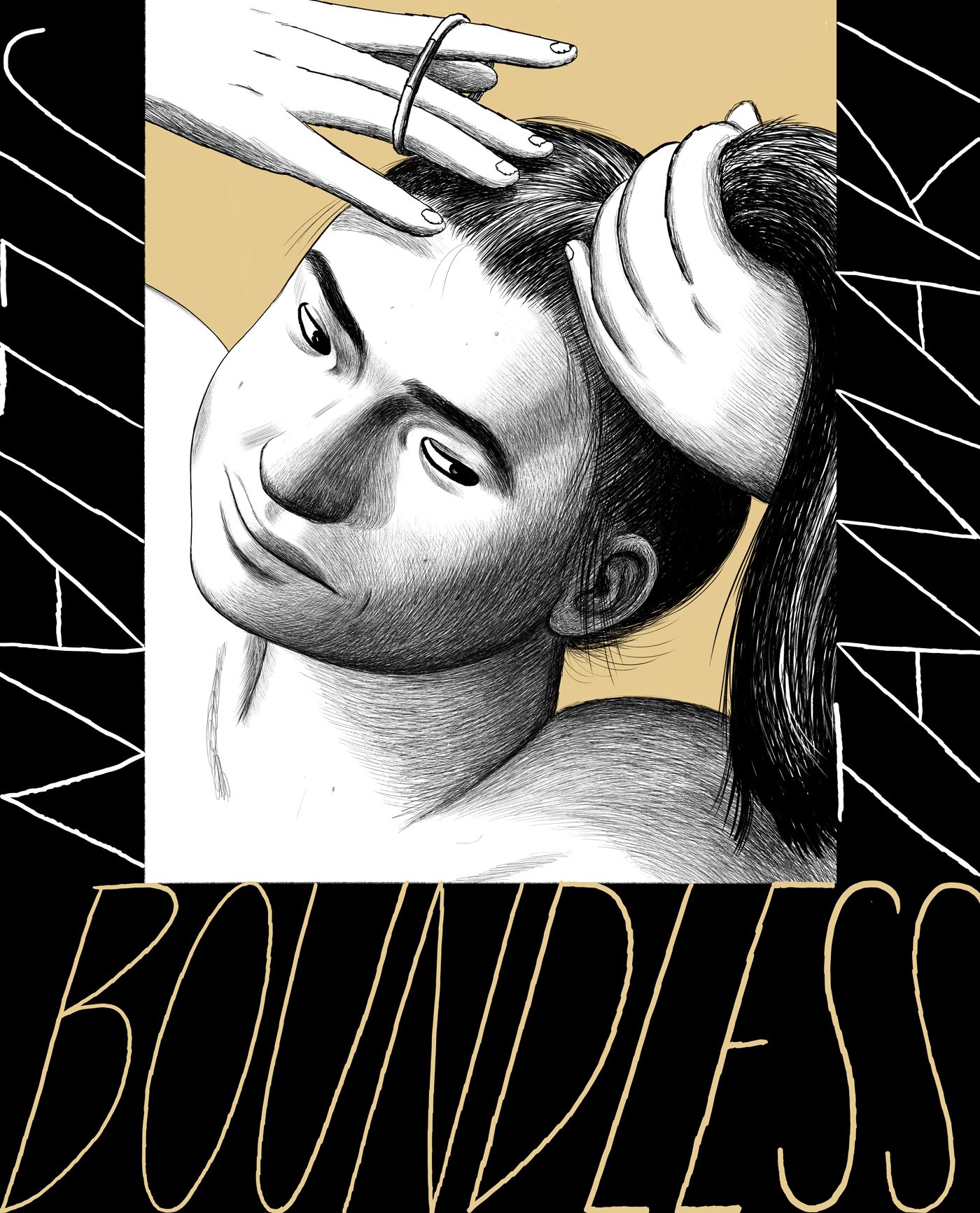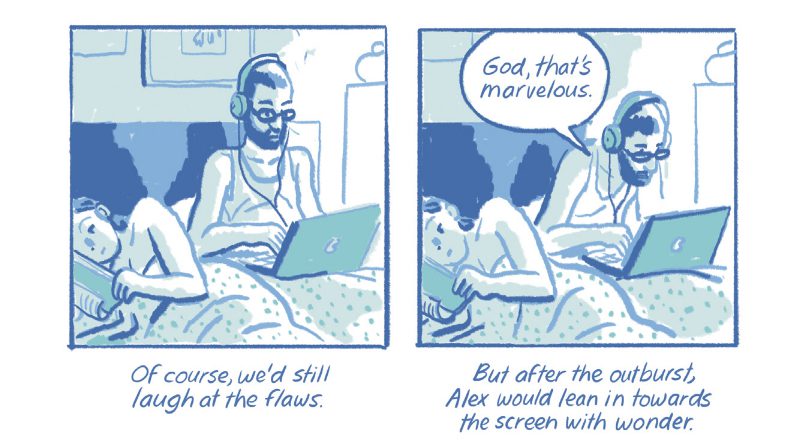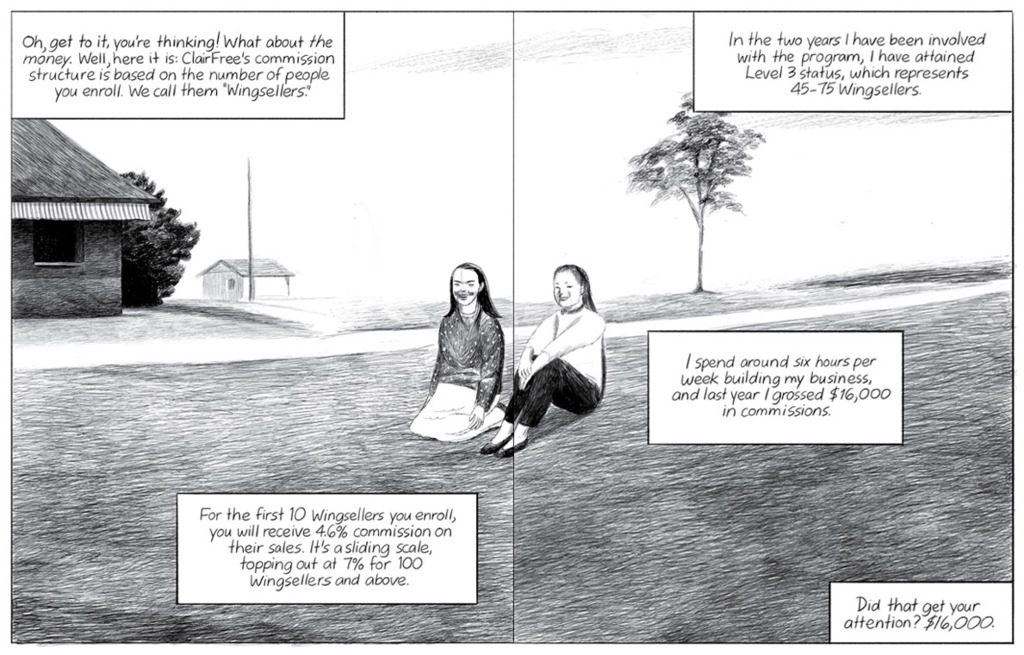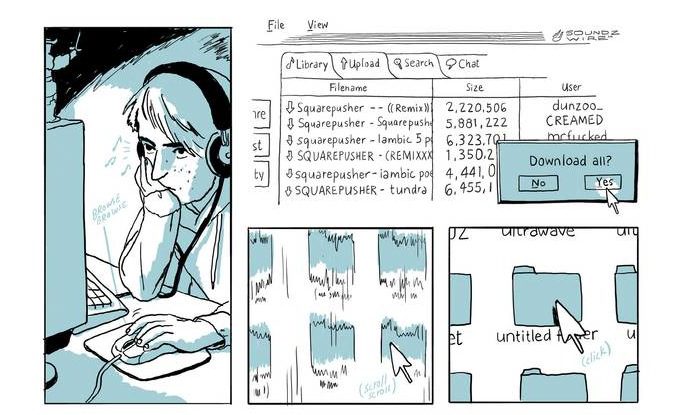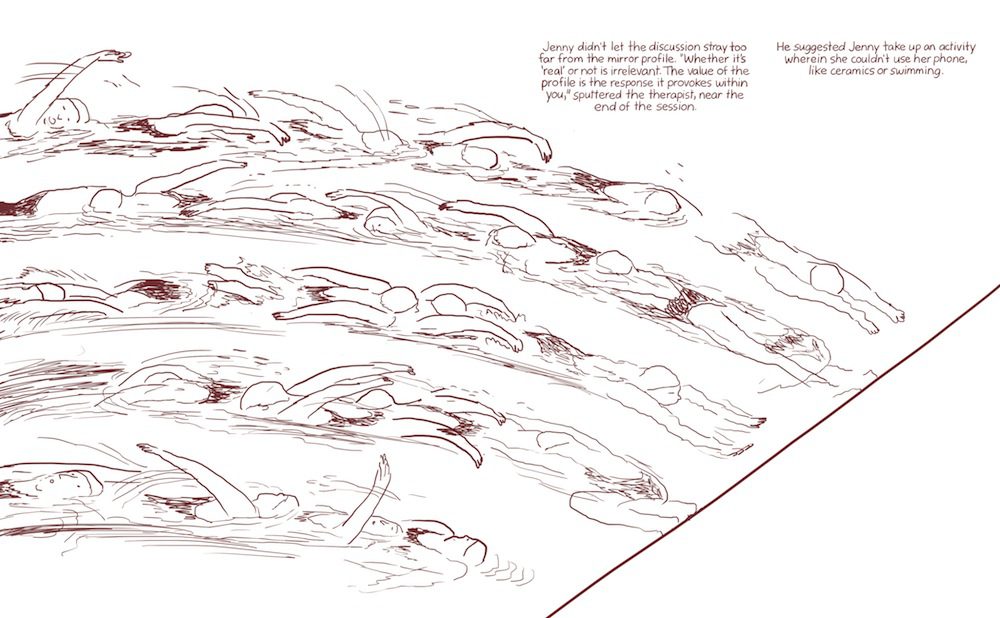I bought Jillian Tamaki’s Boundless. With real money. I’m almost ashamed to tell you this, as someone who hopes to make a living off what he writes and draws, but I rarely buy books new. I mean, have you seen the prices on those things? Thirty, forty bucks, and I’m Canadian, paying with Canadian dollars. That’s a lot of dough to throw down for something I could grab for $5 online or at any used book store, that’s not to mention the fact that I usually walk out of the public library every week or so with an armful of graphic novels and books.
Nevertheless, it happened that one of those armfuls contained three books by Canadian comic artist Jillian Tamaki, two of which were coauthored by her cousin, Mariko. The first book I read by the Tamakis was a slim volume called Skim, which, honestly, did little for me. The illustrations were beautiful, and the Mariko’s ear for dialogue was impeccable, but the story felt a little confused and wasn’t very engaging. I followed this with SuperMutant Magic Academy, one of Jillian’s solo releases, which was a collection of webcomics she had done between 2010 and 2014. This was something I could get behind. The series was kind of a take-off on Harry Potter, and was a blast to read. Finally, and most importantly, I read the Tamakis’ latest team effort, This One Summer. Man, this book was incredible. It really spoke to me, as it seemed to encapsulate every summer I had growing up at the various camps, cottages, and summer homes belonging to my extended family. I adored this book. So, when Jillian’s solo follow-up was released a few weeks ago, I went straight to my local comic shop and bought a copy. It cost me $30. It was worth it.
Boundless is, predictably, much more like SuperMutant Magic Academy than Tamaki’s collaborations with her cousin. After all, like SuperMutant, Boundless is primarily a collection of stories which were published in various publications between 2012 and 2017. While Tamaki’s ability to write well is on full display in these stories, it is her strength as an illustrator that makes the stories special. Each story has a unique and distinctive art style, reflecting and elevating the content of each piece.
The book starts in a way that is difficult to describe. The first comic is called “World Class City.” When read aloud, the writing sounds like slam poetry, written over seemingly unrelated images. Generally speaking, my eyes tend to glaze over when I read this sort of thing. Thankfully, that wasn’t the case here. I’m not really sure why. It’s probably because I enjoyed the storybook-style drawings, and I found the words pleasing to the tongue when read. So, I liked it. I didn’t get it, but I liked it.
The book’s second story, “Body Pods,” was much more accessible, and even profound in what it had to say about about male-dominated subsections of pop culture. It concerns a corny science fiction movie from the late 20th century called Body Pods, which serves as a stand-in for several movies from the seventies and eighties (but mostly Star Wars). Tamaki uses this fictional film as an effective backdrop to explore the culture surrounding her main character as she movies between romantic relationships.
Which is not to suggest that Tamaki considers science fiction a boys’ club. In fact, she dives into the genre herself several times in the collection, most fantastically in the story “Half-Life,” about a shrinking woman. This is a great fable, and is loaded with meaning, but the interpretation of that meaning is mostly left to the reader. Regardless, what we’re offered is a darn good yarn.
This trend towards science fiction is also found in “1.Jenny,” a strange story about a inexplicable (and unexplained) glitch that creates mirror Facebook profiles for all users that start to diverge from their original source. Most people shrug this off, but the protagonist, Jenny, becomes fascinated with the online life of her mirror self. It is in this story that Tamaki’s satirical edge proves to be most insightful.
In a somewhat similar vain, Tamkai presents “SexCoven,” the longest and meatiest story in the book, which equates early adapters of early aughts’ online culture with the hippie culture of the 1960s in a meaningful, and kind of hilarious, way.
Not all the stories found in this book contain fantastical elements, however, and Boundless is anchored by three comics grounded in realism, including “Bed Bugs,” a short narrative about ridding excess clutter from your life, and “Darla!,” about an earnest pornographer in the Age of Irony. Perhaps my favorite of these more realistic pieces is one that couldn’t have been created in any other medium, “The ClaireFree System,” which juxtaposes a pyramid scheme pitch with images that invoke femininity and human connection. As unique and unfamiliar as this comic is in its format, it makes perfect sense. The sentiment is very sad and quite beautiful.
Tamaki’s work, both in her new collection and in her collaborations with her cousin, shows a distinct flare for displaying the humanness in our constantly changing world. Her work regularly confronts us with situations, settings, and behaviors that we recognize, but may never have seen before in a work of art or literature. In 2017, you’d hardly believe this was possible.
It’s significant that Tamaki couches many of these stories so deeply in technology. This is something that, while impossible to ignore, can be a crutch for authors writing in the present. Most writers tend to try and circumnavigate it, and focus directly on the people, or they submit themselves to writing in the same language presented by our expanding vortex of social media, which has a tendency to focus on the post-postmodern, re-contextualizing what’s already been done in loud and, too often, ironic, ways.
Boundless doesn’t do this. Tamaki draws her inspiration from people, from what is real. She is a student of “now,” and seeks to explore the humans that are still present in the thick culture-cloud of media and technology that envelopes us today.
It’s a shame that this seems so rare, but Tamaki should be applauded for it.

